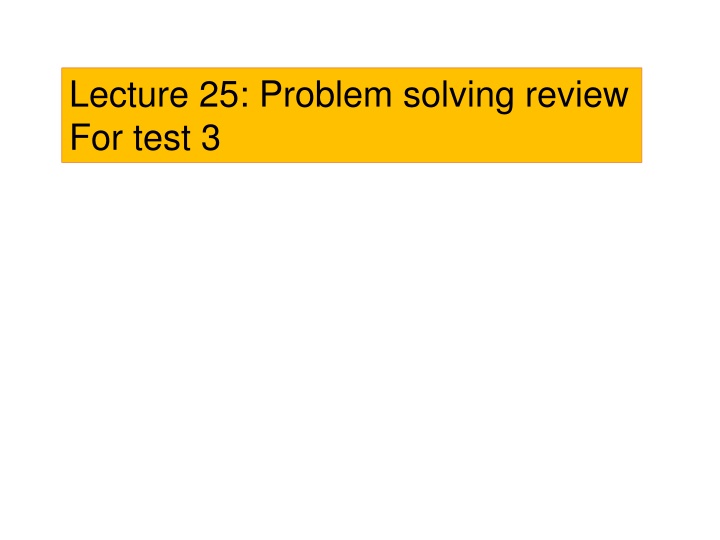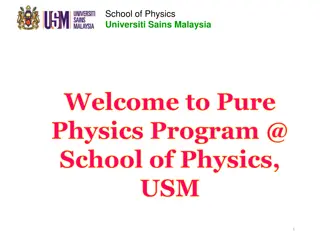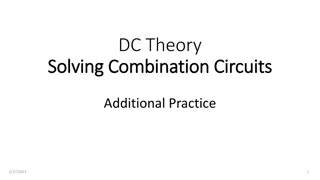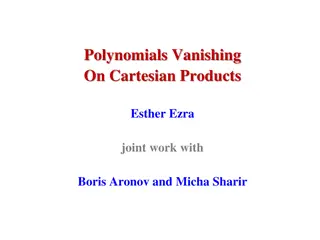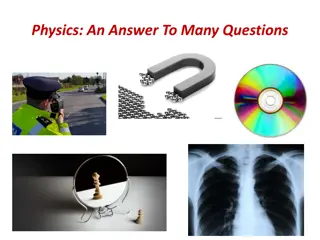Physics Test 3 Problem-Solving Review
Review essential concepts in rotational dynamics and oscillation, understand how to identify different types of problems, and solve energy problems using motion analysis. Prepare for Test 3 with detailed examples and explanations provided in the lecture slides.
Download Presentation

Please find below an Image/Link to download the presentation.
The content on the website is provided AS IS for your information and personal use only. It may not be sold, licensed, or shared on other websites without obtaining consent from the author.If you encounter any issues during the download, it is possible that the publisher has removed the file from their server.
You are allowed to download the files provided on this website for personal or commercial use, subject to the condition that they are used lawfully. All files are the property of their respective owners.
The content on the website is provided AS IS for your information and personal use only. It may not be sold, licensed, or shared on other websites without obtaining consent from the author.
E N D
Presentation Transcript
Lecture 25: Problem solving review For test 3
Test Structure In-person exam, 60 minutes 5 multiple choice questions, 10 points each 3 worked out problems, 50 points each, partial credit Equation sheet stapled to exam package Test rooms: https://web.mst.edu/~vojtaa/engphys1/handouts/Testrooms.pdf
Concepts: Rotation Relationship angular- linear quantities Rolling without slipping Moment of Inertia, parallel axis theorem Rotational kinetic energy Torque Angular dynamics Static equilibrium Angular momentum conservation
Concepts: Oscillation Position, velocity, acceleration in SHO Period of a simple pendulum Period of mass on a spring Physical pendulum Energetics
How to identify type of problem? If object is not moving at all, or moving at constant velocity: no acceleration, no angular acceleration, Static Equilibrium If external forces and torques act on object(s): acceleration and angular acceleration can be obtained from sum of forces/sum of torques speed can be obtained from Energy/Work speed can be obtained from acceleration+kinematics only if forces/torques are constant If no external torques act (e.g. rotational collisions): Angular momentum conserved, mechanical energy changes
Energy problems Identify motion of each object: Only translating Only rotating Both rotating and translating No slipping: relate and Identify other energies
Example 1 You have a pumpkin of mass M and radius R. The pumpkin has the shape of a sphere, but it is not uniform inside; so you do not know its moment of inertia. In order to determine the moment of inertia, you decide to roll the pumpkin down an incline that makes an angle with the horizontal. The pumpkin starts from rest and rolls without slipping. When it has descended a vertical height H, it has 5 4??. acquired a speed ? = Use energy methods to derive an expression for the moment of inertia of the pumpkin.
Forces and torques Draw extended free-body diagram Identify motion of object: Object can rotate Object can translate Object can do both No slipping: relate and
Example 2 A yo-yo shaped device (moment of inertia about center is I) is mounted on a horizontal frictionless axle through its center is used to lift a load of mass M. The outer radius of the device is R, the radius of the hub is r. A constant horizontal force of magnitude P is applied to a rope wrapped around the outside of the device, the box, which is suspended from a rope wrapped around the hub, accelerates upwards. The ropes do not slip. Derive an expression for the acceleration of the box.
Example 3 In a pumpkin throwing contest, a small pumpkin of mass m is moving horizontally with speed v when it hits a vertical pole of length H and mass M that is pivoted at a hinge at its foot. The pumpkin hits the pole a distance d from its upper end and becomes impaled on a long nail that is sticking out of the pole. The pumpkin is small enough to be treated as a point mass. Derive an expression for the angular speed of the system after the collision.
A statics example A box of weight W hangs from the top end of a uniform post that is pivoted on the ground at an angle with respect to the horizontal. A horizontal rope is tied to the post a quarter of the way from the top end. The length of the post is L and its weight is W. The tension in the horizontal rope is 2W. L L rope Derive an expression for angle in terms of system parameters. Simplify your answer.
